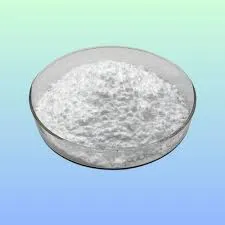
Aug . 14, 2024 00:02 Back to list
Exploring the Applications and Benefits of Hydroxypropyl Methylcellulose in Various Industries
Understanding the Uses of Hydroxypropyl Methylcellulose
Hydroxypropyl methylcellulose (HPMC) is a widely utilized cellulose ether, known for its versatile applications across various industries, including pharmaceuticals, food, cosmetics, and construction. This compound is a semi-synthetic polymer derived from cellulose and is recognized for its unique properties, such as water solubility, film-forming ability, and thickening characteristics. The increasing demand for HPMC in numerous sectors underscores its significance in modern formulations.
Understanding the Uses of Hydroxypropyl Methylcellulose
One of the standout features of HPMC is its role in controlled-release formulations. By manipulating the degree of substitution and molecular weight of HPMC, formulators can achieve a desired drug release profile, leading to sustained therapeutic effects. For example, in the formulation of hydrophilic matrices, HPMC can swell upon contact with gastric fluids, forming a gel-like layer around the medication. This controlled gel formation regulates the release of the drug, minimizing side effects and enhancing patient compliance.
hydroxypropyl methylcellulose use

In the food industry, HPMC is prized for its thickening and stabilizing properties. It is commonly utilized as a food additive, designated as E464, contributing to the texture and consistency of products such as sauces, dressings, and dairy products. By enhancing the viscosity and preventing ingredient separation, HPMC ensures that food products maintain their quality and taste over time. Moreover, it is a favored ingredient in gluten-free formulations, as it helps replicate the texture that gluten typically provides in baked goods, improving the mouthfeel and structure of gluten-free breads and pastries.
The cosmetic industry also exploits the benefits of HPMC in various formulations. It acts as a thickener, stabilizer, and film-forming agent in creams, lotions, and gels. Its ability to create a smooth and pleasing texture contributes to consumer satisfaction and product performance. Additionally, HPMC is used in personal care products to improve the spreadability and adherence of formulations on the skin, making it a valuable ingredient in sunscreen products and leave-on treatments.
In the construction sector, HPMC is utilized in mortar and plaster applications. It enhances the workability and adhesion properties of cement-based materials, ensuring better performance in construction projects. By improving water retention, HPMC allows for longer working times and reduces the risk of cracking, ultimately leading to more durable structures.
In conclusion, hydroxypropyl methylcellulose is a multifaceted ingredient with diverse applications across several industries. Its role as an excipient in pharmaceuticals, a food additive, a cosmetic component, and a construction material enhancer highlights its importance in enhancing product performance and quality. As research and development continue to progress, the potential applications and benefits of HPMC are likely to expand, further solidifying its position as a crucial ingredient in formulation science.
-
Versatile Hpmc Uses in Different Industries
NewsJun.19,2025
-
Redispersible Powder's Role in Enhancing Durability of Construction Products
NewsJun.19,2025
-
Hydroxyethyl Cellulose Applications Driving Green Industrial Processes
NewsJun.19,2025
-
Exploring Different Redispersible Polymer Powder
NewsJun.19,2025
-
Choosing the Right Mortar Bonding Agent
NewsJun.19,2025
-
Applications and Significance of China Hpmc in Modern Industries
NewsJun.19,2025







